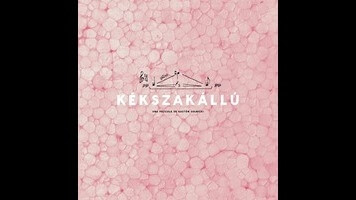Ignore the jumble of accent marks and consonants that make up the title. Kékszakállú is the Hungarian word for Bluebeard, but that doesn’t matter. Nor is it particularly important to know that Béla Bartók’s 1911 opera Bluebeard’s Castle served as this experimental film’s (very, very) loose inspiration. The less you fret about meaning, the more you can concentrate on director Gastón Solnicki’s striking images. Kékszakállú works best as pure cinema, mostly divorced from narrative; some of its most memorable moments don’t even really contribute to the vague theme that gradually emerges. Solnicki just seems to have shot a ton of random material, Terrence Malick-style, and given a home to anything that’s worth looking at for its own sake. This makes for a slightly frustrating experience, even at just 72 minutes, but only because the film feints at being something more than a collage of quiet rapture. On that level, it works beautifully.
The most dazzling stretch occurs at the outset, which was shot in Punta Del Este, a Uruguayan summer resort area. Described broadly, it doesn’t sound like much: various interludes of pre-adolescents at play and teens engaged in romance, with adults largely absent. At this stage, there are no characters per se, though certain faces recur. Instead, Solnicki creates tension by cutting away from a girl as she hesitates, hunched over, with her toes curled nervously around a pool’s diving board. He suggests anxiety by placing his actors off-center in carefully symmetrical compositions, or removing visual cues in a way that makes them look like part of an abstract art piece. Often, he just plays around. A girl treads water as her long hair floats in a dark cloud beneath her, then dunks her head, sending the tresses up to obscure her. A woman opens her apartment’s blinds, revealing distinct reflections in two glass panes, then opens the window itself, doubling and warping one of the two reflections even as the other vanishes.
Eventually, two things sort of “happen.” First, the setting shifts from Punta Del Este to Buenos Aires (though it’ll shift back again later), where Solnicki locates visual fascination inside a Styrofoam factory, among other locations. Second, a protagonist of sorts arrives in the form of a very impassive young woman (Laila Maltz) who makes a few desultory stabs at finding a job and deciding what she might want to study. Any connection with Bluebeard’s Castle is tenuous indeed, though performances of Bartók’s opera occasionally flood the soundtrack, often at incongruous moments—oddly, it doesn’t feel like scolding when, say, a soaring aria accompanies shots of several kids separately glued to their smartphones. Solnicki takes their passion seriously, undramatic though it may be. Kékszakállú isn’t for every taste—this is essentially an avant-garde film, despite the late-breaking storyline—and its portrait of young women searching for a potentially dangerous door to open (there’s the tenuous connection) is itself half-formed and uncertain. Solnicki has admitted in interviews that he more or less made the movie up as he went along, not knowing quite what he was after, and it shows. But he has a remarkable eye and boundless curiosity, and those two qualities are enough to sustain a brief yet restlessly inventive exploration like this one.














![HBO teases new Euphoria, Larry David, and much more in 2026 sizzle reel [Updated]](https://img.pastemagazine.com/wp-content/avuploads/2025/12/12100344/MixCollage-12-Dec-2025-09-56-AM-9137.jpg)


























